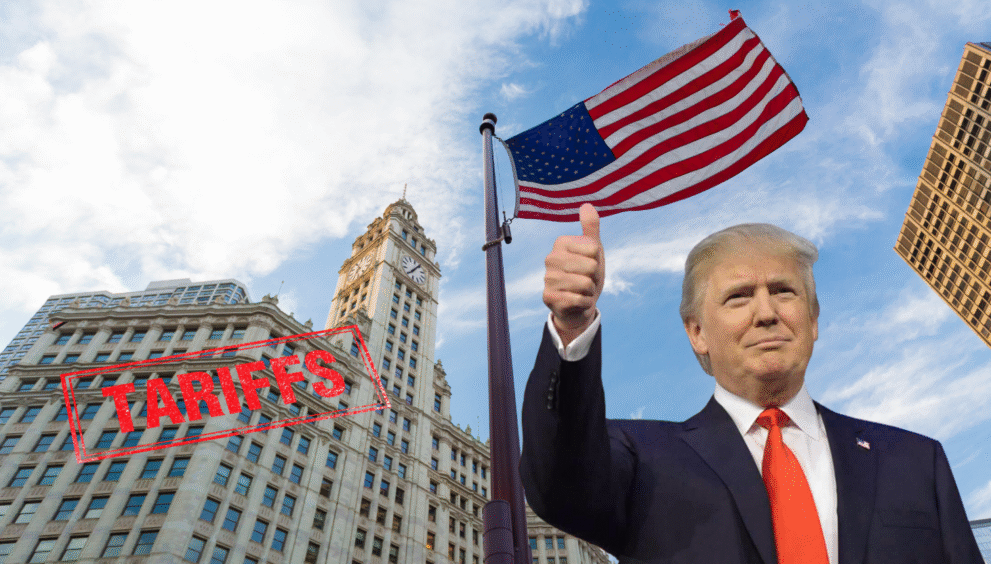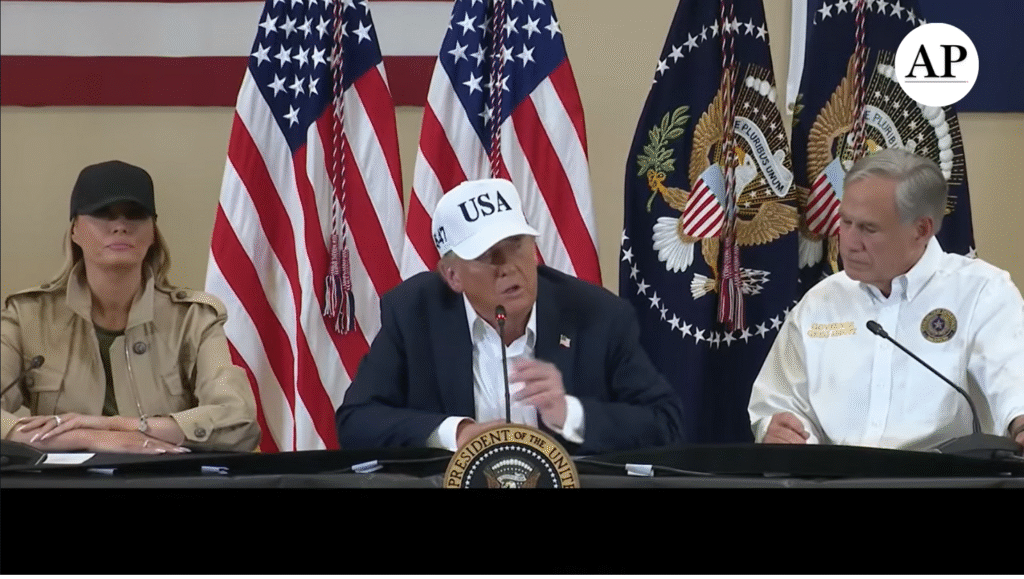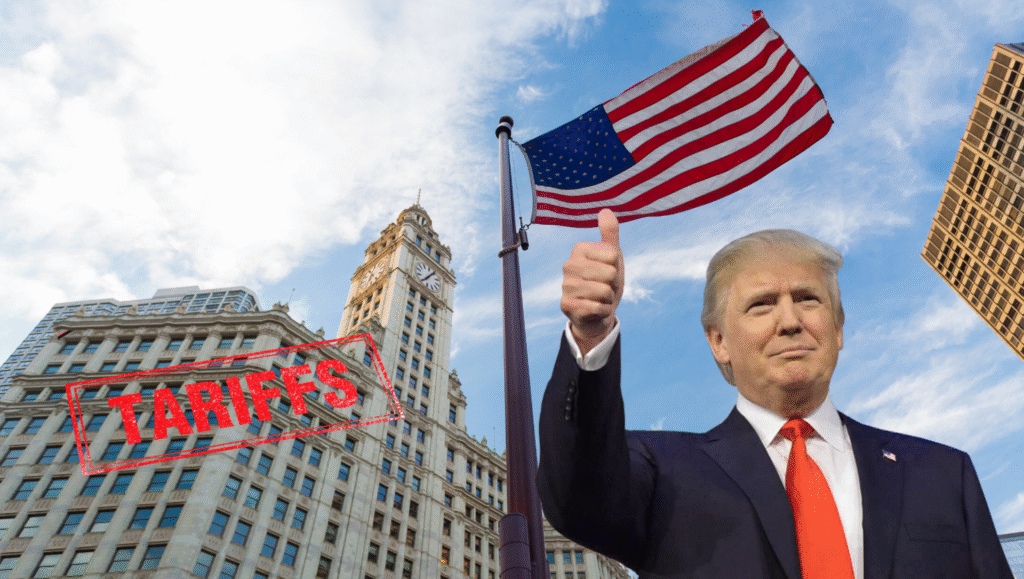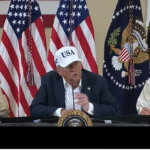Trump Bold Move: 30% Tariffs on EU and Mexico Set to Shake Up International Trade

In a dramatic twist that could reshape the landscape of international commerce, former President Donald Trump has unveiled plans to impose sweeping 30% tariffs on goods imported from the European Union and Mexico. This bold move is sending shockwaves through global markets, igniting fierce debates among economists, policymakers, and business leaders alike. Will this aggressive strategy safeguard American jobs or provoke retaliatory measures that escalate into a full-blown trade war? As experts scramble to analyze the potential fallout, one thing is certain: the ripple effects of Trump’s latest maneuver will reverberate far beyond borders—upending supply chains and redefining relationships between nations. Buckle up as we dive deep into how these tariffs could shake up international trade forever!
In a move that has captured headlines around the globe, President Trump is shaking up international trade with bold new tariffs. With a whopping 30% tariff on imports from the European Union and Mexico, this decision could reshape economic relationships and alter market dynamics in ways we are only beginning to understand. As tensions rise between trading partners, both supporters and critics are voicing their opinions on what this means for global commerce. Buckle up—this latest maneuver by Donald Trump is set to stir the pot in ways we never saw coming!
Explanation of the 30% Tariffs on EU and Mexico
The recent announcement of a 30% tariff on imports from the EU and Mexico has sent shockwaves through international markets. This substantial increase is aimed at various goods, including steel, automobiles, and agricultural products.
By imposing these tariffs, President Trump seeks to bolster American manufacturing while reducing trade deficits. The rationale behind such a drastic measure lies in protecting domestic industries that he believes are suffering due to unfair competition.
However, this bold move raises questions about its long-term effectiveness. Tariffs typically lead to higher prices for consumers as businesses pass on costs.
Moreover, it could disrupt established supply chains that involve intricate networks between the U.S., Europe, and Mexico. As companies scramble to adjust their strategies, the ramifications may extend far beyond mere economics into political territory as well.
Reasons Behind Trump’s Decision
President Trump’s decision to impose 30% tariffs on the EU and Mexico stems from a desire to protect American jobs. He believes that foreign competition often undermines U.S. industries. By raising tariffs, he aims to level the playing field for American manufacturers.
Another motivating factor is trade imbalances. The administration argues that these tariffs will address deficits that have long favored other countries over the United States.
Additionally, there are political considerations at play. With impending elections, Trump seeks to rally his base by taking a tough stance against what he labels unfair trade practices.
The president also emphasizes national security concerns related to reliance on imports for essential goods. He presents this move as part of a broader strategy to bolster domestic production while reducing dependency on international supply chains.
These layered motivations reflect Trump’s ongoing commitment to an “America First” agenda in global trade discussions.
Potential Consequences for US Trading Partners
The introduction of a 30% tariff on goods from the EU and Mexico is set to reverberate through international markets. Countries heavily reliant on exports to the United States may experience significant economic strains.
Manufacturers in these regions will face increased costs, potentially leading to higher prices for consumers. This could also diminish their competitiveness against other global suppliers not subjected to similar tariffs.
Furthermore, industries like automotive and agriculture are particularly vulnerable. Both sectors rely heavily on trade agreements with the U.S., making them prime targets for disruption.
As nations seek alternatives or adjust their strategies, we might see shifts in supply chains that affect global production dynamics. The long-term implications could reshape relationships between trading partners as they navigate this new landscape brought forth by Trump’s bold move.
Analysis of How This Move Aligns with Trump’s Trade Policies
Trump’s decision to impose 30% tariffs on the EU and Mexico is a continuation of his America First agenda. Since taking office, President Trump has aimed to reshape trade dynamics that he perceives as disadvantageous to American workers.
This latest tariff move underscores his commitment to protecting domestic industries from foreign competition. Tariffs have been a signature tactic in Trump’s approach, intended not only for economic benefits but also as leverage in negotiations.
The action aligns with previous moves against China and other trading partners. It signals an unwavering stance on what he considers unfair trade practices.
Additionally, the tariffs could be seen as part of a broader strategy to renegotiate existing agreements like NAFTA. By applying pressure on allies, Trump reinforces his belief that tough measures can lead to better deals for the United States.
Expert Opinions and Reactions from Global Economists and Leaders
Global economists are divided on Trump’s latest tariff announcement. Some view it as a necessary step to protect American industries, while others warn of potential backlash.
Many leaders from affected countries express deep concern. They argue that imposing 30% tariffs could escalate tensions and disrupt established trade relationships.
Economist Dr. Jane Thompson suggests the move may backfire, leading to increased prices for consumers in the U.S. She emphasizes that ordinary Americans could bear the brunt of these decisions.
Conversely, supporters like economist Mark Davis believe this bold action will compel trading partners to negotiate fairer terms.
The uncertainty surrounding President Trump’s approach keeps markets on edge. Investors are watching carefully, anticipating shifts in international dynamics that could follow this decision.
Potential Effects on US Economy and Consumers
The implementation of 30% tariffs on imports from the EU and Mexico could stir significant changes within the US economy. Consumers might face higher prices for goods that rely heavily on these imports. Whether it’s electronics, automobiles, or essential groceries, costs are likely to increase.
Manufacturers may also feel the pinch as they contend with rising raw material expenses. This can lead to reduced production capacity or even layoffs if businesses cannot adjust quickly enough.
Moreover, trade partners might retaliate by imposing their own tariffs on American products. Such actions could further disrupt market dynamics and ultimately hurt American exporters.
Shifts in consumer behavior may emerge as shoppers seek alternatives to pricier imported goods. The landscape of buying habits could shift dramatically while domestic producers either thrive or struggle under new pressures.
Possible Retaliation from Affected Countries
Countries like Mexico and those in the European Union are weighing their options. They could impose tariffs of their own, targeting American goods that range from agriculture to technology.
Mexico might focus on exports such as avocados and tequila. These products have become staples in U.S. markets, making them effective leverage points.
The EU has a history of strategic responses. They could retaliate by increasing duties on iconic American brands or industries. This would undoubtedly resonate with American consumers who cherish these imports.
Global trade dynamics are fragile, and this escalation can lead to unforeseen consequences for both sides. Economists warn that prolonged tariff wars often hurt domestic economies more than anticipated.
All eyes will be on how leaders react in coming weeks, as the stakes climb higher on an already tense international trading landscape.
Conclusion: What This Means for the Future of International Trade
The recent announcement of 30% tariffs on goods from the EU and Mexico by Donald Trump marks a significant shift in international trade dynamics. This bold move reflects Trump’s ongoing commitment to prioritize American interests, but it raises questions about the broader implications for global commerce.
As tensions escalate, trading partners may reconsider their strategies. The potential for retaliatory measures could lead to an escalating trade war that impacts not only tariffs but also diplomatic relations. Economists are closely monitoring how these changes might affect supply chains and consumer prices within the United States.
For consumers, this means potentially higher costs on imported goods—an adjustment many will have to navigate. Industries reliant on imports from these regions face uncertainty as they adapt to new pricing structures.
Ultimately, the ramifications of President Trump’s tariff strategy stretch far beyond immediate financial impacts. They signify a pivotal moment in shaping future international trade policies and relationships worldwide. The landscape is shifting rapidly; all eyes will be watching how domestic and foreign players react to this evolving scenario in global markets.


 English
English 


























